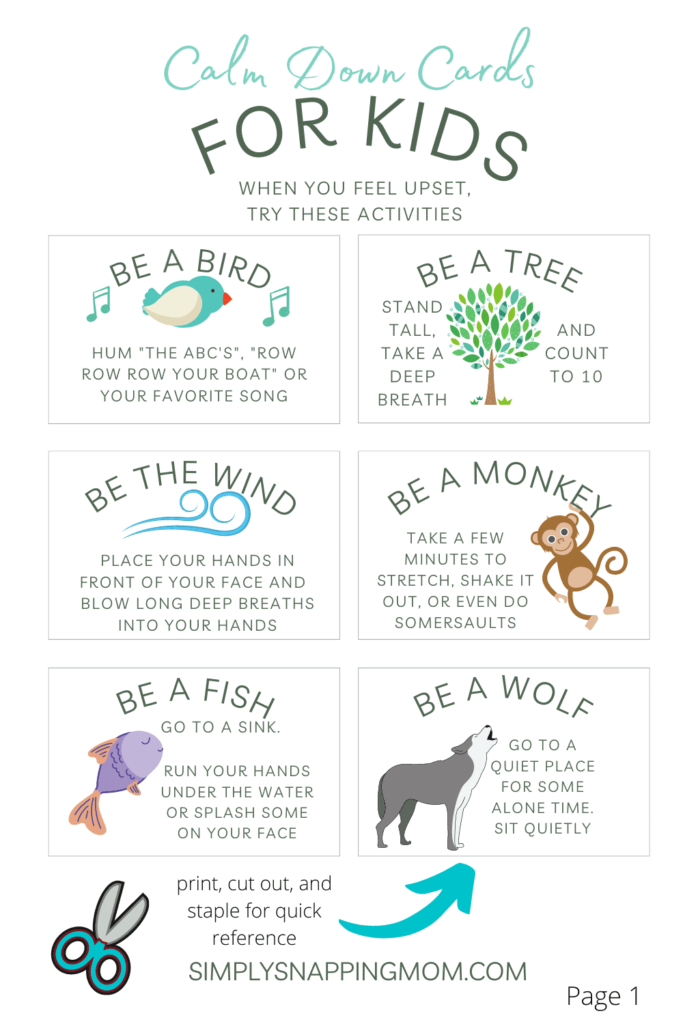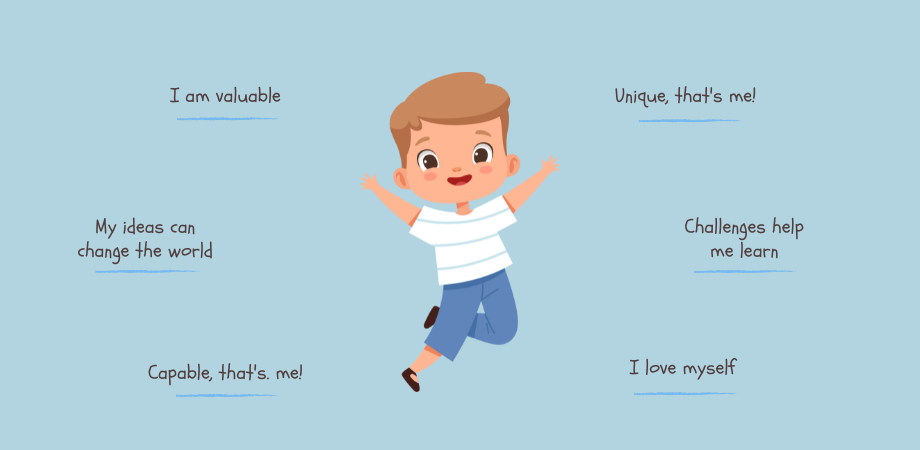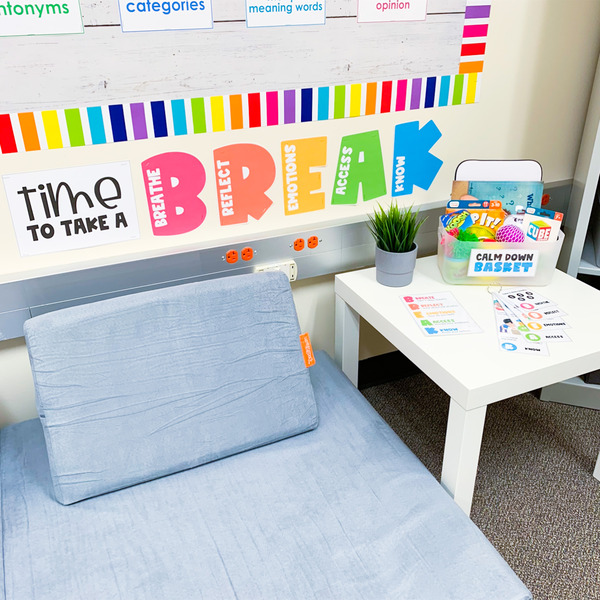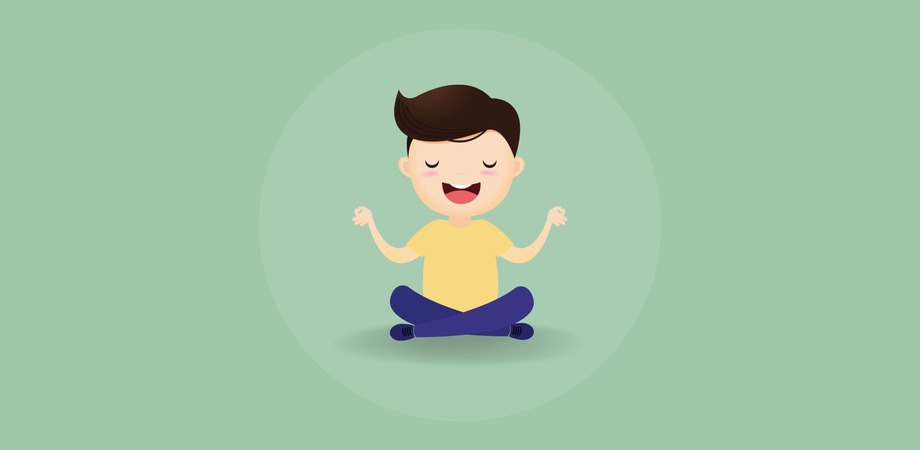Helping our kids deal with their emotions is one of the most valuable skills we can help them cultivate.
Not only can we model healthy self-regulation, but we can provide the tools and the space they need to self-regulate.
These areas are safe zones that give children the time and space to acknowledge their feelings while feeling secure and validated.
Why You Need a Calm-Down Corner
Our children are bombarded with daily stimuli, which can sometimes be too much to handle. When they become dysregulated, having a place they can go to reset and feel safe can make for a more peaceful home and classroom environment.
Calm-down corners also allow children to take responsibility for their emotions and actions, which is a vital life skill.
How to Create a Calm-Down Corner Kids Will Love
- Normalize using the calm-down corner when they are upset
- Cater to various sensory needs
- Make it a comfortable and safe place
- Have boundaries around using the space
- Use the calm-down corner yourself
- Fill it with helpful posters, toys, tools, and calming activities
Try any of these calming corner ideas to help manage those big feelings:
1. Have a Soothing Color Palette

When children experience big emotions, having a soothing space to reset can be helpful. Whether you use warm or cool tones, try and keep the colors pastel and neutral. Calming colors won’t stimulate the brain further and allow kids to manage their emotions more easily.
2. Calm Down Animal Action Cards


Sometimes, children need direction when it comes to managing their emotions. For example, some kids may need to shake out feelings with vigorous movement before settling down. While others will need to be still and quiet to process their emotions.
The beauty of a calm-down corner in your classroom or home is that it can teach unique coping skills to each child.
3. Have a Weighted Lap Band

A weighted lap band can help provide Deep Pressure Stimulation when big emotions run riot in little bodies. This can stimulate the release of serotonin and help kids feel more relaxed.
To make your own, you need:
- Long tube sock
- Needle and thread
- Rice
- Essential oil (lavender, orange, or cedarwood)
Fill the sock with rice and darn the end closed before folding and sewing it closed firmly. Add a few drops of essential oil to the sock.
4. Have a Calm-Down Corner Plan

Children need boundaries and structure to thrive, particularly when they are dysregulated. Consider having rules for your calm down corner, so it is not abused.
Some boundary options are:
- Having a timer
- Giving kids a limited selection of activity options
- When time is up, let them know to talk to the teacher or head back to their desk
- Only one person can use the space as a time
5. Use a Grounding Tool

Use a grounding tool to help children calm their anxiety and practice being more present in their environment.
This activity involves all five senses and is an excellent way for teachers and parents to support kids as they learn to self-regulate.
Mindfulness activities like this are a fun way to help kids notice what is happening around them while they process what is happening inside them.
6. Offer a Selection of Helpful Books

Books are a great addition to a calming corner, especially if they have a positive message about regulating emotions.
Here are some books you can include in your calm-down corner:
- Feelings and Choices by Radical Education
- I am Stronger Than Anger by Elizabeth Cole
- My Body Sends a Signal by Natalia Maguire
- The Color Monster by Anna Llenas
- Breathe Like a Bear by Kira Willey
- The Choices I Make by Michael Gordan
7. “I Am” Statement Cards

“I Am” statements are powerful tools for helping little people self-regulate, so they are a must in your calm-down corner. Use a free printable, create a flip book, or have kids write their own statements as a calm-down activity.
8. Have Activity Choices

Let your kids have autonomy in the calm-down corner as they learn to handle their emotions. Allow them to choose the activities that work best for them because these will be the most soothing.
Letting them choose how to control their feelings will also empower them to be mindful when using the space.
9. Display a Feelings Chart

A feelings chart is helpful for younger children because they can see a visual representation of the emotion they are experiencing.
Being able to name what they are feeling is a crucial skill for children to learn to self-regulate. You can’t work through an emotion you can’t name or understand.
10. Have a Yoga Pose Poster

Yoga can help young children cope with anxiety and improve self-regulation through mindfulness and a body-mind connection.
Because it is a slow and conscious form of exercise, kids can benefit from the focus and calmness it can bring.
11. Have a Calm-Down Kit

A calm-down kit works well in a classroom or in the car for those melt-down moments. You can put whatever you like in yours and tailor it to your child.
Some fun suggestions for your calm-down kit are:
- A book your child loves
- A calming spray made from water and lavender essential oil
- A stress ball or putty
- A fidget or toy
- A feelings wheel
- A snack
12. Calming Sensory Playdough

Playdough on its own is ideal for helping children regulate their emotions because the sensory experience of molding and squeezing is very calming.
Add some essential oil to your playdough, like lavender, and your kids can benefit from the soothing scents while they play.
13. Make it a Cozy Space

When you are in a heightened emotional state, you often want comfort, and kids are no different. Make your calm-down space a cozy corner with various seating options, blankets, cushions, and stuffed toys.
A bean bag chair and fairy lights can turn a corner of your classroom or playroom into a haven for emotional kids.
14. Keep it Private

The calm-down corner in a classroom should be tucked away with as much privacy as possible. It is hard enough for young children to battle their emotions without having their peers watch.
Some fun options include tents, fabric drapes, or playhouses. Children also tend to feel safer when they can go inside a space, so offering them a cozy and private area will help them feel secure.
15. Have a Positive Affirmations Mirror

Positive affirmations can profoundly affect kids, and they need them more than ever when they are emotionally dysregulated.
Have a mirror in your calm down corner and stick positive affirmations around it. Encourage your kids to repeat some of the affirmations while looking at themselves in the mirror.
Losing your temper or feeling angry is difficult. Sometimes our kids need to be reminded that emotions are normal and that making mistakes is how we learn.
16. Keep it Organized

Your calm-down corner should be cozy but organized. A child already overwhelmed by emotion doesn’t need a space that makes them feel more flustered.
A table, plastic storage tubs, and neatly displayed posters can all be helpful tools that don’t cause a sensory overload.
17. 5-Finger Breathing Poster

Sometimes, kids just need to breathe to break the emotional cycle they find themselves in.
5-finger breathing is an easy technique that gets kids breathing and helps them focus on something other than their emotions. This can allow them to calm down enough to start self-regulating.
Using one hand, draw your finger up your thumb while breathing in through your mouth. At the top of your thumb, start breathing out through your nose as you move down your thumb. Continue this pattern tracing up and down each finger.
18. Use Mindset Rocks

Growth mindset rocks are a fun activity you can do as a class or family to use in your calm-down corner. They are a great way to teach mindfulness and can also be used as a way to help children deal with their emotions.
Kids can spend time reading the rocks and stacking them while in the calm-down corner. Then, they can keep one rock for the day to help them remain calm. Then, at the end of the day, they put the rock back.
19. Fill it with Plants

Research shows that spending time around plants can improve emotional well-being and reduce anxiety, so fill your calming corner with plants.
Not only will they give the space a feeling of tranquility, but your kids can also be responsible for looking after them.
20. Use a Mini-Zen Garden

A mini-zen garden is another excellent mindfulness practice that allows children to focus on something while they process their emotions.
You can make your own mini-zen garden using the following:
- A plastic/wooden container or tray
- A fork
- Kinetic sand
- Stones
21. Have a Sensory Bin

A sensory bin filled with lavender-scented beans is a fantastic option for your calming corner. It can help kids feel calmer and allow them to work through their emotions.
A sensory bin is easy to customize; you could use rice, water beads, or kinetic sand. Include scoops and jars in your sensory bin for added fun.
Calm Down Corners Help Children Find a Safe Space to Process their Feelings
Modeling emotional regulation and teaching children the skills they need to self-regulate is one of the most valuable lessons we can offer.
Self-awareness and the ability to regulate our emotions develop in childhood. By helping our children now, we are creating emotionally stable and empathetic adults.
Having calm-down corners lets your children know that their feelings are normal and valid. What a gift to have a quiet space to learn more about yourself and your big feelings.
